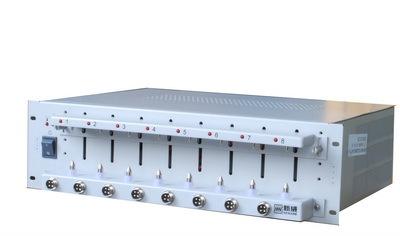Battery Testing Equipment Market Expected to Benefit from Increasing Investment in Battery Gigafactories Worldwide

The battery testing equipment market is poised for significant growth, driven by the escalating global investments in battery gigafactories. As the demand for electric vehicles (EVs), renewable energy storage, and advanced electronics surges, manufacturers are scaling up production capacities to meet these needs. This expansion necessitates the deployment of advanced battery testing equipment to ensure the safety, efficiency, and longevity of batteries produced in these large-scale facilities.
Surge in Gigafactory Investments
The global shift towards sustainable energy solutions has led to a substantial increase in the establishment of battery gigafactories. These large-scale facilities are designed to produce batteries at unprecedented volumes, catering to the growing needs of the EV and energy storage markets. For instance, companies like CATL are investing billions in constructing gigafactories in regions such as Europe and Asia, aiming to meet the rising demand for high-performance batteries.
In Europe, the European Battery Alliance has been instrumental in promoting the development of a competitive and sustainable battery manufacturing value chain. This initiative has led to the establishment of several gigafactories, with more in the pipeline, contributing to the region's ambition to reduce dependency on external battery suppliers and bolster its position in the global battery market.
Role of Battery Testing Equipment
As gigafactories ramp up production, the importance of robust battery testing equipment becomes paramount. These facilities require precise and efficient testing solutions to ensure that each battery meets the stringent performance and safety standards expected by consumers and regulatory bodies. Key roles of battery testing equipment in gigafactories include:
-
Performance Evaluation: Assessing the energy output, charge/discharge efficiency, and overall performance of batteries to ensure they meet the required specifications.
-
Safety Testing: Conducting rigorous safety tests to identify potential risks such as thermal runaway, short circuits, and overcharging, thereby preventing hazardous situations.
-
Durability Assessment: Evaluating the lifespan and cycle stability of batteries to ensure they can withstand prolonged use without significant degradation.
-
Quality Control: Implementing consistent testing protocols to maintain uniform quality across large production volumes, minimizing defects and ensuring customer satisfaction.
Technological Advancements in Testing Equipment
The evolution of battery technologies necessitates corresponding advancements in testing equipment. Modern battery testing solutions are incorporating cutting-edge technologies to enhance their capabilities:
-
Automation: Automated testing systems enable high-throughput testing, reducing human error and increasing efficiency in gigafactory settings.
-
AI Integration: Artificial intelligence algorithms analyze test data to predict battery performance and lifespan, facilitating proactive maintenance and design improvements.
-
Real-Time Monitoring: IoT-enabled devices allow for continuous monitoring of battery parameters during production, ensuring immediate detection of anomalies.
-
Advanced Simulation: Simulation tools replicate real-world conditions to assess battery behavior under various scenarios, aiding in the development of more resilient battery designs.
Market Growth and Opportunities
The increasing investment in battery gigafactories presents significant growth opportunities for the battery testing equipment market. As production scales up, the demand for sophisticated testing solutions is expected to rise correspondingly. This trend is particularly evident in regions like Asia Pacific and Europe, where substantial investments are being made in battery manufacturing infrastructure.
In Asia Pacific, countries such as China, Japan, and South Korea are leading the charge in establishing gigafactories, driven by both domestic demand and export potential. These nations are not only investing in production capacity but also in research and development to innovate and improve battery technologies, further fueling the need for advanced testing equipment.
Europe, with its ambitious green energy goals and automotive industry, is also witnessing a surge in gigafactory investments. The European Union's initiatives to promote sustainable transportation and energy storage solutions are encouraging the establishment of battery manufacturing facilities across the continent, thereby driving the demand for high-quality battery testing equipment.
Challenges and Considerations
Despite the promising growth prospects, the battery testing equipment market faces several challenges:
-
High Capital Investment: The development and deployment of advanced testing equipment require significant financial investment, which may be a barrier for some manufacturers.
-
Technological Complexity: As battery technologies evolve, testing equipment must continuously adapt to accommodate new chemistries and designs, necessitating ongoing research and development.
-
Regulatory Compliance: Adhering to varying international standards and regulations can complicate the testing process, requiring manufacturers to invest in equipment that meets diverse requirements.
-
Supply Chain Constraints: The global supply chain for electronic components and materials used in testing equipment can be susceptible to disruptions, affecting the availability and cost of testing solutions.
Conclusion
The rapid expansion of battery gigafactories worldwide is a testament to the accelerating demand for advanced energy storage solutions. This growth underscores the critical role of battery testing equipment in ensuring the production of safe, efficient, and durable batteries. As investments in gigafactories continue to rise, the battery testing equipment market is set to experience substantial growth, driven by the need for sophisticated testing solutions that keep pace with technological advancements and industry demands.







